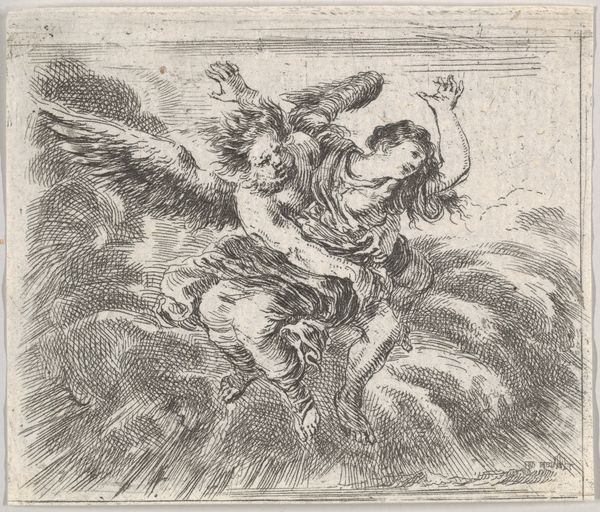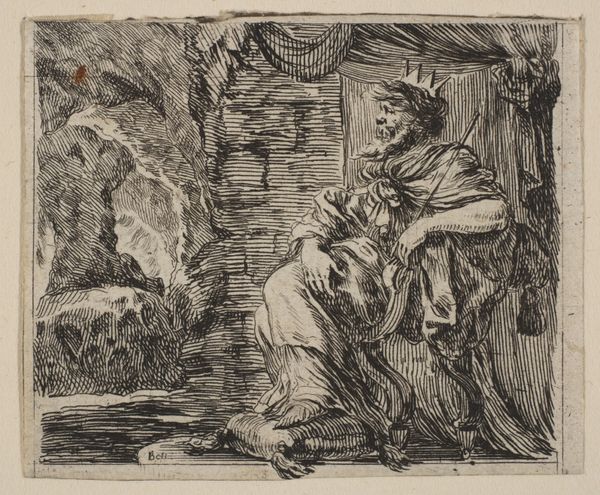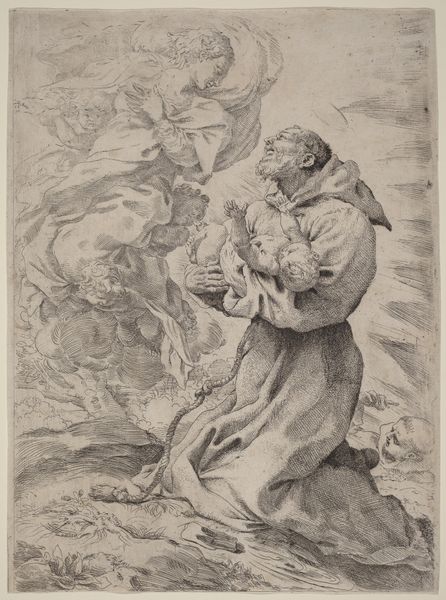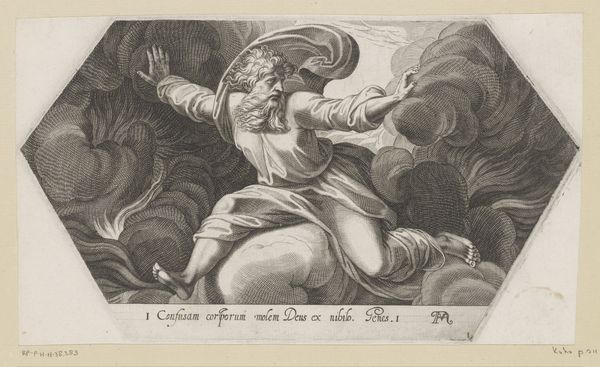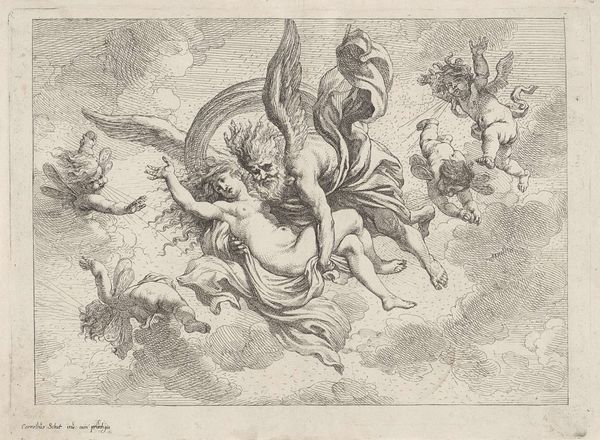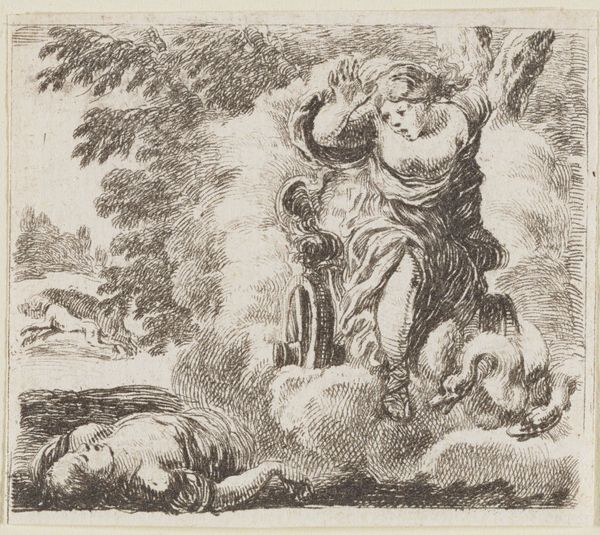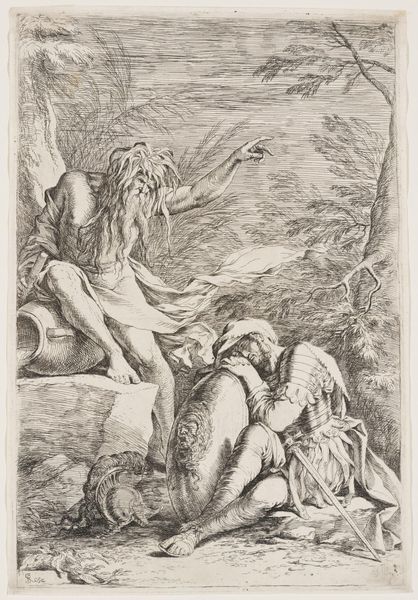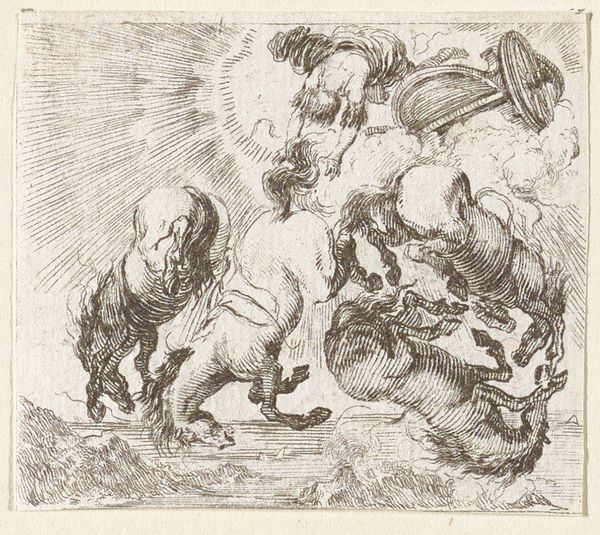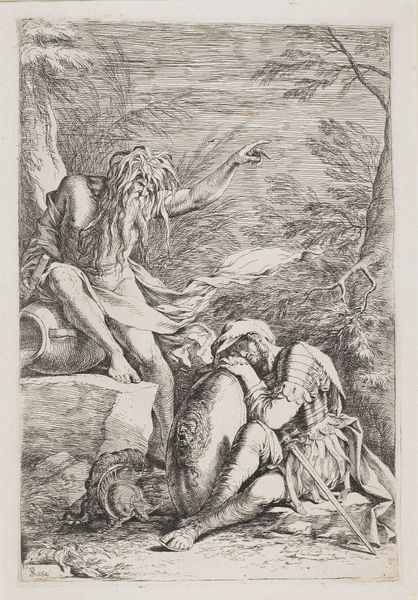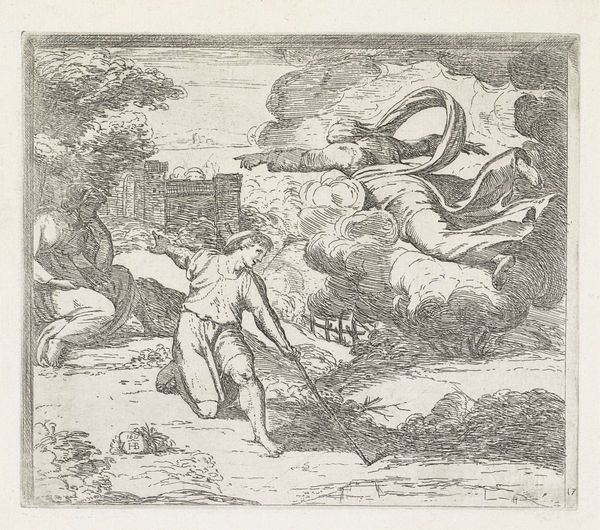
print, etching
#
baroque
# print
#
etching
#
figuration
#
line
#
history-painting
Dimensions: height 130 mm, width 179 mm
Copyright: Rijks Museum: Open Domain
Editor: This is "God Separating Light from Darkness," an etching by Sisto Badalocchio, created around 1607. The stark contrast immediately grabs your attention; it's incredibly dynamic, full of implied motion. What do you see in this print? Curator: Observe the strategic employment of line. Badalocchio establishes depth not through tonal variation, but via cross-hatching, layering, and the density of linework. Notice how the composition itself directs our eye, following God’s sweeping gesture. Do you perceive how the artist uses the contrast to define not just light and dark, but also form? Editor: I do. The figure of God is muscular and well-defined, and the cloud-like forms beneath him almost echo the dynamism of his pose, creating a unified upward thrust. So, are you saying the primary interest here is not the subject, but rather the manipulation of form and line to convey meaning and movement? Curator: Precisely. The narrative is secondary to the execution. Note, too, how the textures, created through the etching process, imbue a tactile quality to the intangible—light, darkness, divine power. Consider the varying thickness and directionality of the lines—how these contribute to the overall impact of the piece. Editor: It’s almost as if the lines themselves are creating the separation. I never considered etching to have so much expressive potential before. Curator: Indeed. Badalocchio transforms a biblical moment into a sophisticated study of artistic form and technique. Editor: I now appreciate how a seemingly straightforward image is in fact a masterclass of form and texture, pushing the boundaries of what the etching medium can achieve.
Comments
No comments
Be the first to comment and join the conversation on the ultimate creative platform.
